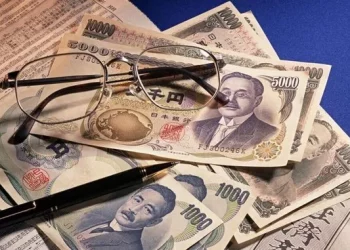Foreign exchange (Forex) trading is the largest and most liquid financial market in the world. It involves the trading of different currencies against each other, and the value of each currency is determined by a variety of factors, including economic data, market sentiment, and geopolitical events. One of the most common questions that arise in the world of currency exchange is, “How much is $800 US dollars in Australian dollars?” To answer this question accurately, we must first understand the fundamentals of exchange rates and how they are calculated in the foreign exchange market.
This article will explore how the value of $800 USD is determined when converted into Australian dollars (AUD), how exchange rates are set, factors influencing currency values, and provide an understanding of the implications of currency conversion for both businesses and individuals.
What is the Exchange Rate?
Before delving into the specifics of converting $800 USD into AUD, it is essential to understand what an exchange rate is and how it functions. An exchange rate is the price of one currency in terms of another currency. For example, if the exchange rate between the US dollar (USD) and the Australian dollar (AUD) is 1 USD = 1.50 AUD, then $800 USD would convert to 1,200 AUD.
The exchange rate fluctuates constantly due to various factors that influence the demand for each currency. These fluctuations can be minor or significant, and they affect the cost of international trade, travel, investments, and other financial transactions.
The Forex Market and Exchange Rate Dynamics
The Forex market operates 24 hours a day, five days a week, and is decentralized, meaning that there is no central exchange where currencies are bought and sold. Instead, currencies are traded in a network of banks, financial institutions, brokers, and individuals worldwide.
The value of a currency is determined by the interaction between supply and demand. When there is a high demand for a currency, its value tends to rise relative to other currencies. Conversely, when there is low demand for a currency, its value tends to fall. These shifts in supply and demand are driven by a variety of factors, including:
Economic Indicators: Data such as GDP growth, employment figures, inflation rates, and interest rates have a significant impact on currency values. Strong economic performance typically strengthens a currency, while weak economic performance can lead to a depreciation of the currency.
Political Stability: Political events, such as elections, government policies, and geopolitical tensions, can influence currency values. A stable political environment is usually seen as favorable for a strong currency.
Market Sentiment: The collective behavior of traders and investors, influenced by news events, market forecasts, and economic data, can drive currency prices up or down.
Central Bank Policies: Central banks, such as the Federal Reserve in the US or the Reserve Bank of Australia (RBA), play a critical role in managing their country’s currency value. They may adjust interest rates, conduct monetary policy, or intervene in the forex market to stabilize or influence the value of their currency.
Converting $800 USD to AUD: The Calculation
To determine how much $800 USD is in Australian dollars, we need to look at the current exchange rate between the two currencies. The exchange rate is typically expressed as the amount of AUD that can be obtained for each USD.
For example, if the exchange rate between the USD and AUD is 1 USD = 1.50 AUD, then the conversion would look like this:
800 USD×1.50=1,200 AUD
Thus, $800 USD would be equivalent to 1,200 AUD at an exchange rate of 1 USD = 1.50 AUD.
However, the exchange rate is rarely fixed. It changes continuously due to the factors mentioned earlier. At the time of writing this article, the exchange rate could be different, so it is essential to check the real-time exchange rate from a reliable financial source, such as a bank, currency converter, or Forex platform.
Fluctuations in Exchange Rates: How They Impact Conversion
Exchange rates are subject to fluctuations, and these fluctuations can have a significant impact on how much you will receive when converting $800 USD to AUD. For instance, if the exchange rate moves in your favor, you could receive more AUD for your $800 USD. On the other hand, if the exchange rate moves against you, you would receive fewer Australian dollars for the same amount of US dollars.
To understand this better, let’s consider two hypothetical scenarios:
Favorable Scenario: Suppose the exchange rate is 1 USD = 1.60 AUD. In this case, converting $800 USD would give you:
800 USD×1.60=1,280 AUD
You would receive 1,280 AUD, which is 80 AUD more than in the previous example where the rate was 1.50.
Unfavorable Scenario: On the other hand, if the exchange rate falls to 1 USD = 1.40 AUD, then the conversion would be:
800 USD×1.40=1,120 AUD
In this case, you would receive 1,120 AUD, which is 80 AUD less than in the favorable scenario.
Thus, exchange rate fluctuations can result in substantial differences in the amount of AUD you receive for your US dollars. Traders and businesses in the Forex market carefully monitor these fluctuations and use various strategies, such as hedging, to manage their exposure to currency risk.
Factors Influencing the USD to AUD Exchange Rate
Several factors specifically influence the exchange rate between the US dollar and the Australian dollar. Some of the key factors include:
Interest Rate Differentials: One of the most influential factors affecting the USD/AUD exchange rate is the difference in interest rates between the United States and Australia. If the Federal Reserve raises interest rates while the Reserve Bank of Australia keeps rates unchanged, the US dollar may appreciate relative to the Australian dollar, as higher interest rates attract investment in the US.
Commodity Prices: Australia is a major exporter of commodities such as iron ore, coal, and gold. Therefore, changes in commodity prices can have a significant impact on the Australian dollar. When global demand for these commodities increases, the Australian economy tends to perform better, which can strengthen the AUD. Conversely, a drop in commodity prices can weaken the Australian dollar.
Global Risk Appetite: The USD and AUD are often viewed as “risk-on” and “risk-off” currencies. The US dollar is considered a safe-haven currency, meaning it tends to perform well during times of global uncertainty or economic downturns. The Australian dollar, on the other hand, is often seen as a higher-risk currency due to Australia’s reliance on commodity exports. As a result, the AUD may appreciate when global risk sentiment is strong and decline when risk aversion increases.
Trade Balances: The balance of trade between the US and Australia also plays a role in determining the exchange rate. A trade deficit (when a country imports more than it exports) can put downward pressure on the value of the domestic currency, while a trade surplus can strengthen the currency.
Using Currency Conversion for Business and Travel
Understanding how to convert USD to AUD and how exchange rates fluctuate is not only important for traders but also for businesses and travelers who engage in international transactions.
For businesses, especially those involved in importing or exporting goods, the fluctuations in exchange rates can directly impact profitability. For example, an Australian company importing goods from the US may find that the cost of those goods increases when the Australian dollar weakens against the US dollar. Conversely, if the AUD strengthens, the company may benefit from lower costs.
For individuals traveling between the US and Australia, understanding exchange rates can help manage costs. If the AUD is stronger than the USD, travelers may find that their US dollars stretch further in Australia, allowing them to spend more on goods and services. On the other hand, if the AUD is weaker, they may need to exchange more US dollars to cover their expenses.
How to Convert USD to AUD: Practical Tips
There are several ways individuals and businesses can convert US dollars to Australian dollars, including:
Currency Exchange Services: Banks, currency exchange bureaus, and online platforms offer currency exchange services. These services often charge a fee or offer a slightly less favorable exchange rate, so it’s important to compare rates before making a transaction.
ATMs: Using an ATM in Australia to withdraw cash in Australian dollars is another common option for travelers. However, be aware that some banks charge fees for international withdrawals, and exchange rates may differ from the rates offered by local currency exchange providers.
Forex Trading Platforms: For those involved in Forex trading, online brokers and platforms offer real-time exchange rates and the ability to trade USD for AUD directly. These platforms are often used by professional traders to speculate on currency movements.
Hedging Strategies: Businesses that regularly deal with foreign exchange risk may use hedging strategies to protect themselves from unfavorable currency fluctuations. This can include forward contracts, options, or other financial instruments designed to lock in a favorable exchange rate.
Conclusion
Converting $800 USD into Australian dollars depends entirely on the current exchange rate between the two currencies. While the rate can fluctuate due to a variety of factors, understanding how these fluctuations occur is essential for making informed decisions about currency exchange. Whether you’re a Forex trader, a business owner, or a traveler, having a basic understanding of exchange rates can help you make better financial decisions.
At the end of the day, the value of $800 USD in AUD will vary depending on when and how you exchange it. Therefore, it is important to monitor the market, understand the factors affecting exchange rates, and consider using tools such as Forex platforms or professional financial services to manage your currency exchange needs.
Related Topics:



























